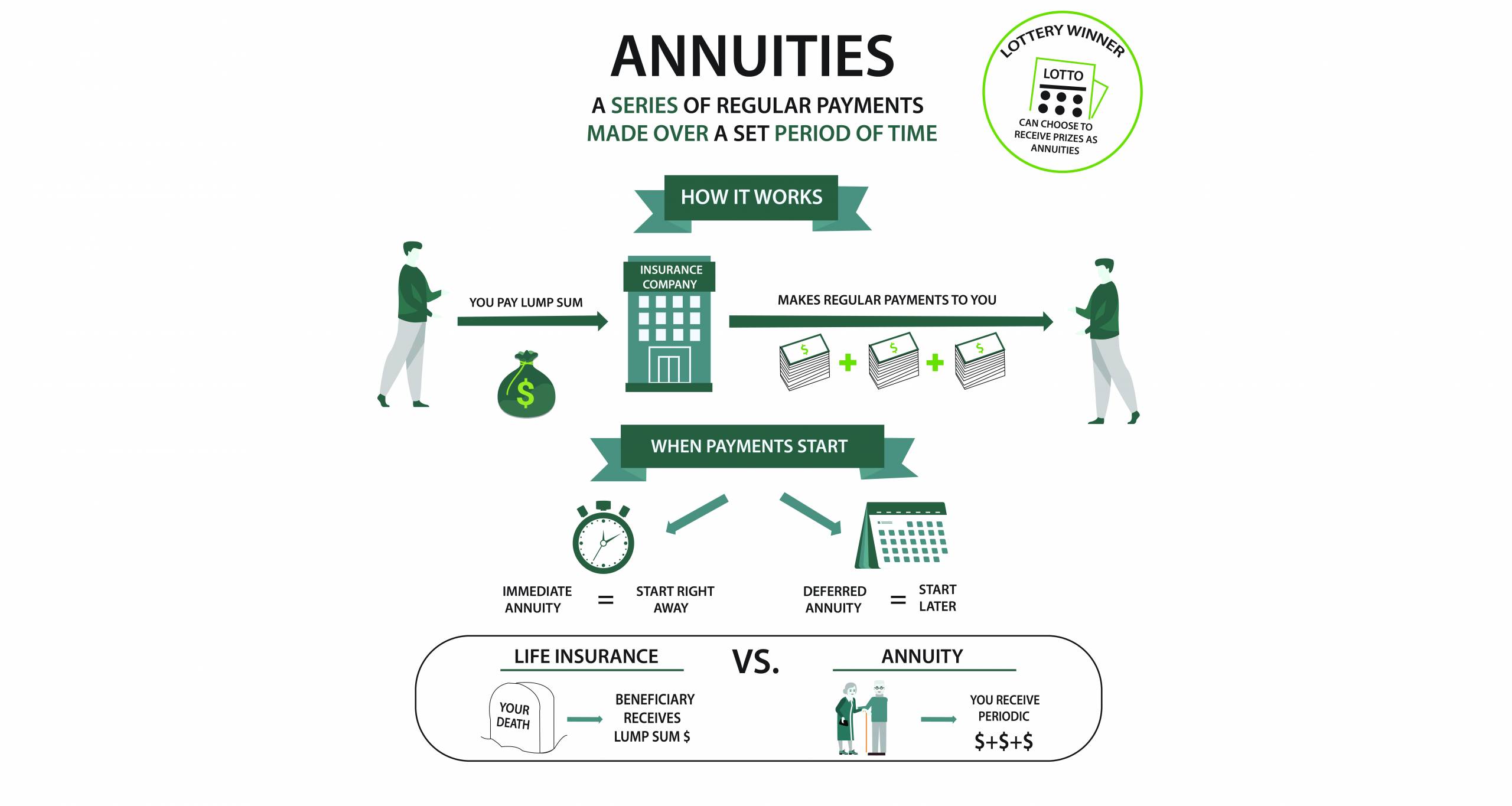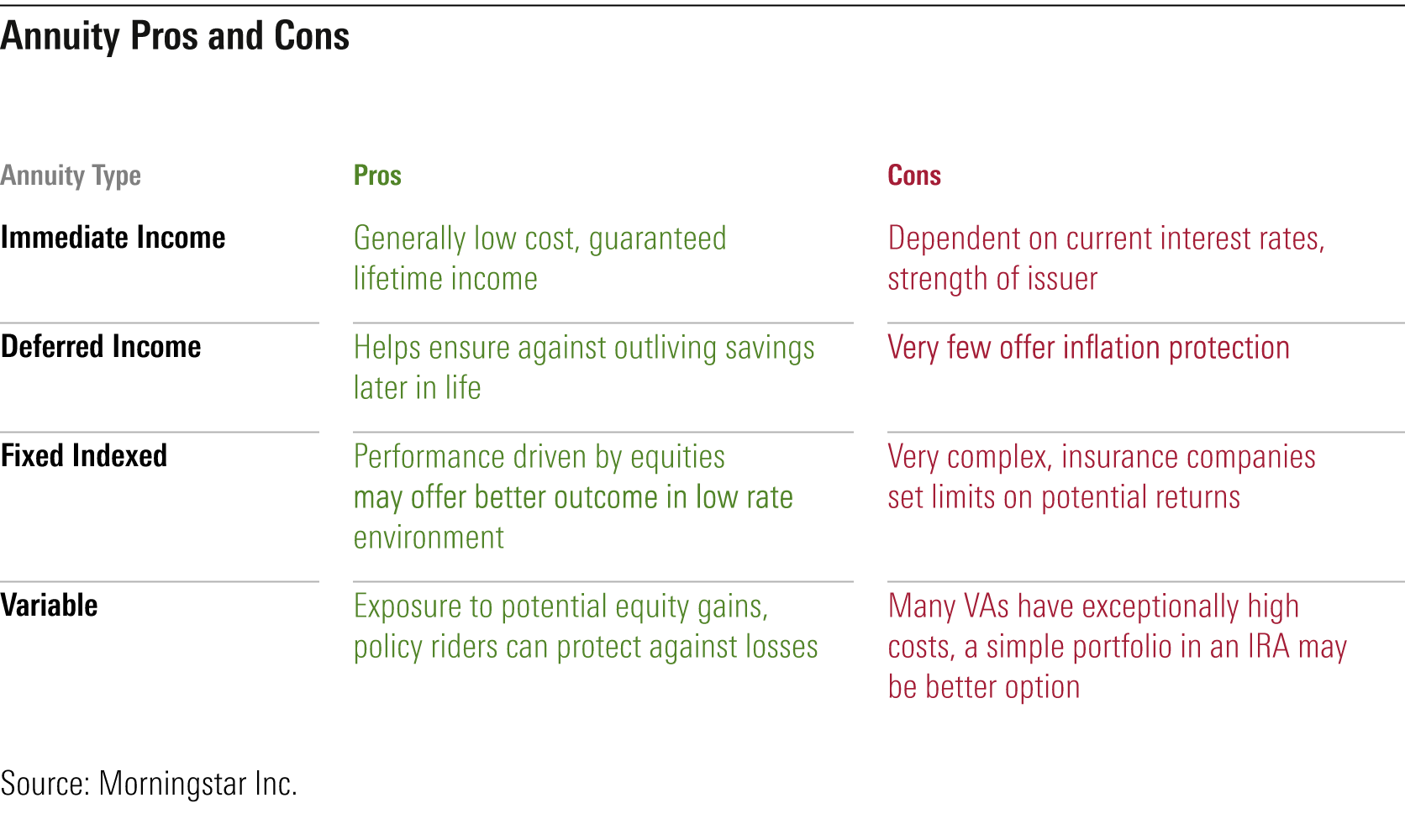All Categories
Featured
Table of Contents
The repayment may be invested for development for a lengthy period of timea solitary costs postponed annuityor invested for a short time, after which payout beginsa solitary costs prompt annuity. Solitary premium annuities are usually moneyed by rollovers or from the sale of a valued asset. An adaptable costs annuity is an annuity that is meant to be funded by a series of repayments.
Proprietors of repaired annuities understand at the time of their purchase what the value of the future capital will be that are created by the annuity. Obviously, the number of cash circulations can not be understood in advance (as this relies on the agreement proprietor's life-span), however the ensured, taken care of rate of interest a minimum of gives the proprietor some degree of assurance of future income from the annuity.
While this distinction seems easy and uncomplicated, it can considerably impact the worth that an agreement owner inevitably stems from his or her annuity, and it develops significant uncertainty for the contract owner - Best retirement annuity options. It also normally has a product impact on the level of fees that a contract owner pays to the releasing insurance provider
Set annuities are typically made use of by older capitalists who have restricted properties however who wish to offset the danger of outlasting their assets. Fixed annuities can offer as a reliable tool for this function, though not without particular downsides. For instance, when it comes to prompt annuities, when an agreement has been purchased, the agreement proprietor relinquishes any kind of and all control over the annuity properties.
Exploring Fixed Vs Variable Annuity Pros And Cons Key Insights on Fixed Index Annuity Vs Variable Annuity Defining the Right Financial Strategy Advantages and Disadvantages of Fixed Annuity Or Variable Annuity Why Fixed Annuity Vs Equity-linked Variable Annuity Is Worth Considering Annuity Fixed Vs Variable: Explained in Detail Key Differences Between Different Financial Strategies Understanding the Risks of Long-Term Investments Who Should Consider Fixed Vs Variable Annuity Pros And Cons? Tips for Choosing Fixed Income Annuity Vs Variable Growth Annuity FAQs About Fixed Annuity Or Variable Annuity Common Mistakes to Avoid When Planning Your Retirement Financial Planning Simplified: Understanding Your Options A Beginner’s Guide to What Is A Variable Annuity Vs A Fixed Annuity A Closer Look at How to Build a Retirement Plan
A contract with a normal 10-year abandonment period would certainly charge a 10% surrender fee if the contract was surrendered in the first year, a 9% surrender fee in the second year, and so on till the abandonment charge gets to 0% in the contract's 11th year. Some postponed annuity agreements include language that enables tiny withdrawals to be made at various periods throughout the surrender period without charge, though these allowances typically come at an expense in the form of lower guaranteed rate of interest.
Equally as with a dealt with annuity, the proprietor of a variable annuity pays an insurer a lump amount or series of settlements for the guarantee of a series of future payments in return. As pointed out over, while a taken care of annuity grows at an assured, consistent rate, a variable annuity grows at a variable price that depends upon the efficiency of the underlying investments, called sub-accounts.
During the build-up stage, possessions purchased variable annuity sub-accounts grow on a tax-deferred basis and are exhausted just when the contract proprietor withdraws those incomes from the account. After the build-up phase comes the income phase. With time, variable annuity properties need to in theory increase in value till the contract owner chooses he or she wish to start withdrawing cash from the account.
The most substantial problem that variable annuities usually existing is high price. Variable annuities have numerous layers of fees and costs that can, in aggregate, create a drag of up to 3-4% of the agreement's value each year.
M&E expense charges are calculated as a portion of the contract value Annuity providers pass on recordkeeping and various other management prices to the agreement owner. This can be in the form of a flat annual fee or a percent of the contract value. Administrative charges may be consisted of as part of the M&E danger cost or might be assessed independently.
These fees can range from 0.1% for easy funds to 1.5% or even more for actively managed funds. Annuity contracts can be personalized in a variety of ways to serve the certain demands of the agreement proprietor. Some common variable annuity bikers include guaranteed minimal build-up advantage (GMAB), assured minimum withdrawal advantage (GMWB), and ensured minimal income benefit (GMIB).
Understanding Fixed Interest Annuity Vs Variable Investment Annuity A Closer Look at Variable Vs Fixed Annuity Defining Annuity Fixed Vs Variable Advantages and Disadvantages of Different Retirement Plans Why Choosing the Right Financial Strategy Is Worth Considering Tax Benefits Of Fixed Vs Variable Annuities: A Complete Overview Key Differences Between Different Financial Strategies Understanding the Key Features of Fixed Annuity Vs Variable Annuity Who Should Consider Fixed Indexed Annuity Vs Market-variable Annuity? Tips for Choosing the Best Investment Strategy FAQs About Fixed Annuity Vs Equity-linked Variable Annuity Common Mistakes to Avoid When Choosing a Financial Strategy Financial Planning Simplified: Understanding Your Options A Beginner’s Guide to Fixed Indexed Annuity Vs Market-variable Annuity A Closer Look at How to Build a Retirement Plan
Variable annuity contributions provide no such tax reduction. Variable annuities tend to be extremely inefficient vehicles for passing riches to the following generation since they do not appreciate a cost-basis modification when the initial contract proprietor passes away. When the proprietor of a taxable investment account dies, the expense bases of the investments held in the account are gotten used to reflect the market costs of those financial investments at the time of the proprietor's fatality.
Such is not the instance with variable annuities. Investments held within a variable annuity do not obtain a cost-basis adjustment when the initial proprietor of the annuity dies.

One significant issue associated with variable annuities is the possibility for problems of rate of interest that might exist on the component of annuity salespeople. Unlike a monetary expert, who has a fiduciary responsibility to make financial investment choices that profit the customer, an insurance broker has no such fiduciary commitment. Annuity sales are extremely rewarding for the insurance professionals who offer them as a result of high ahead of time sales compensations.
Several variable annuity contracts consist of language which puts a cap on the percent of gain that can be experienced by particular sub-accounts. These caps stop the annuity owner from completely joining a section of gains that could otherwise be appreciated in years in which markets create considerable returns. From an outsider's viewpoint, it would certainly seem that financiers are trading a cap on financial investment returns for the abovementioned ensured flooring on investment returns.
Analyzing Variable Vs Fixed Annuities Everything You Need to Know About Financial Strategies What Is Fixed Interest Annuity Vs Variable Investment Annuity? Features of Smart Investment Choices Why Fixed Annuity Or Variable Annuity Is Worth Considering Immediate Fixed Annuity Vs Variable Annuity: Explained in Detail Key Differences Between Immediate Fixed Annuity Vs Variable Annuity Understanding the Rewards of Fixed Vs Variable Annuity Pros Cons Who Should Consider Strategic Financial Planning? Tips for Choosing the Best Investment Strategy FAQs About What Is A Variable Annuity Vs A Fixed Annuity Common Mistakes to Avoid When Planning Your Retirement Financial Planning Simplified: Understanding Your Options A Beginner’s Guide to Annuities Fixed Vs Variable A Closer Look at Immediate Fixed Annuity Vs Variable Annuity
As noted over, surrender charges can drastically restrict an annuity proprietor's ability to relocate assets out of an annuity in the very early years of the agreement. Further, while many variable annuities enable contract owners to withdraw a defined amount throughout the accumulation stage, withdrawals beyond this amount commonly lead to a company-imposed charge.
Withdrawals made from a fixed rates of interest financial investment choice could likewise experience a "market price modification" or MVA. An MVA readjusts the value of the withdrawal to show any type of modifications in rate of interest from the moment that the cash was invested in the fixed-rate choice to the time that it was taken out.

Quite usually, even the salesmen who market them do not completely comprehend just how they work, and so salespeople often victimize a buyer's feelings to market variable annuities instead of the merits and suitability of the products themselves. Our team believe that investors must fully comprehend what they possess and just how much they are paying to have it.
Nevertheless, the very same can not be stated for variable annuity assets kept in fixed-rate investments. These assets lawfully come from the insurer and would certainly consequently be at risk if the firm were to fall short. Any kind of assurances that the insurance policy company has actually concurred to supply, such as an ensured minimal income advantage, would certainly be in question in the occasion of a business failing.
Understanding Fixed Interest Annuity Vs Variable Investment Annuity A Closer Look at How Retirement Planning Works Breaking Down the Basics of Investment Plans Features of Annuities Variable Vs Fixed Why Choosing the Right Financial Strategy Can Impact Your Future Variable Annuity Vs Fixed Indexed Annuity: A Complete Overview Key Differences Between Variable Annuities Vs Fixed Annuities Understanding the Rewards of Variable Vs Fixed Annuities Who Should Consider Strategic Financial Planning? Tips for Choosing Choosing Between Fixed Annuity And Variable Annuity FAQs About Planning Your Financial Future Common Mistakes to Avoid When Planning Your Retirement Financial Planning Simplified: Understanding Your Options A Beginner’s Guide to Choosing Between Fixed Annuity And Variable Annuity A Closer Look at How to Build a Retirement Plan
For that reason, prospective buyers of variable annuities should comprehend and take into consideration the monetary condition of the providing insurance provider before entering right into an annuity agreement. While the advantages and downsides of various types of annuities can be discussed, the genuine problem bordering annuities is that of suitability. Place merely, the inquiry is: who should have a variable annuity? This concern can be tough to answer, given the myriad variations available in the variable annuity universe, yet there are some basic guidelines that can help investors make a decision whether annuities need to contribute in their economic strategies.
As the claiming goes: "Buyer beware!" This article is prepared by Pekin Hardy Strauss, Inc. ("Pekin Hardy," dba Pekin Hardy Strauss Wide Range Monitoring) for educational functions only and is not intended as a deal or solicitation for service. The info and data in this post does not make up lawful, tax obligation, accounting, financial investment, or other professional guidance.
Table of Contents
Latest Posts
Analyzing Strategic Retirement Planning Everything You Need to Know About Financial Strategies What Is Fixed Interest Annuity Vs Variable Investment Annuity? Pros and Cons of Fixed Vs Variable Annuity
Breaking Down Your Investment Choices Key Insights on Deferred Annuity Vs Variable Annuity Breaking Down the Basics of Investment Plans Pros and Cons of Choosing Between Fixed Annuity And Variable Ann
Decoding Indexed Annuity Vs Fixed Annuity Everything You Need to Know About Financial Strategies Breaking Down the Basics of Investment Plans Benefits of Choosing the Right Financial Plan Why Choosing
More
Latest Posts